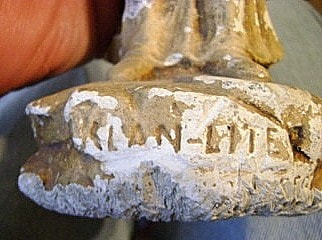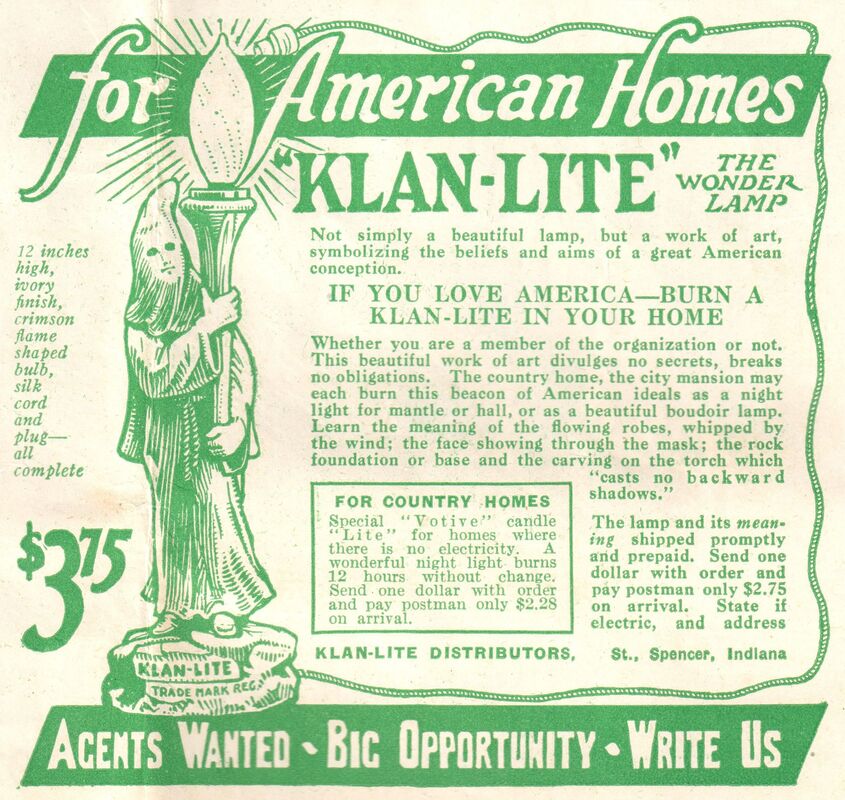***
DISCLAIMER
DISCLAIMER
The material presented on this page is meant to be viewed in its historical context only, and in no way reflects the beliefs nor opinions of this site's Webmaster.
***
1923: THE KLAN-LITE
The decade of the 1920s was a time of overt racism, xenophobia, and anti-immigrant sentiment. Thus, one of the rarest and controversial Viquesney pieces you'll ever see is his "Klan-Lite". Billed as "The Wonder Lamp", it was reportedly "moving like wildfire" when introduced in late 1923. For homes in rural areas with no electricity (which was common at the time), there was a slightly less expensive "votive" candlestick version available.
As E. M. Viquesney researcher T. Perry Wesley noted on page 5 of his original 1991 Doughboy report, at the peak of the artist's career it was a time when the government of Indiana was virtually under the control of the Ku Klux Klan, with the governor and more than half the state legislature being Klan members, and although there is no evidence to indicate that E. M. Viquesney was ever a member himself, it goes without saying he was an ardent supporter.
An alert site visitor researching genealogy records found the ad and newspaper articles below.
WARNING: Some people (including myself) may find this material offensive.
See the disclaimer at the top of this page.
WARNING: Some people (including myself) may find this material offensive.
See the disclaimer at the top of this page.
The American Legion award mentioned in the left-hand article above, regarding Viquesney's "Spirit of the American Doughboy" (and the award's subsequent revocation) are discussed elsewhere.






